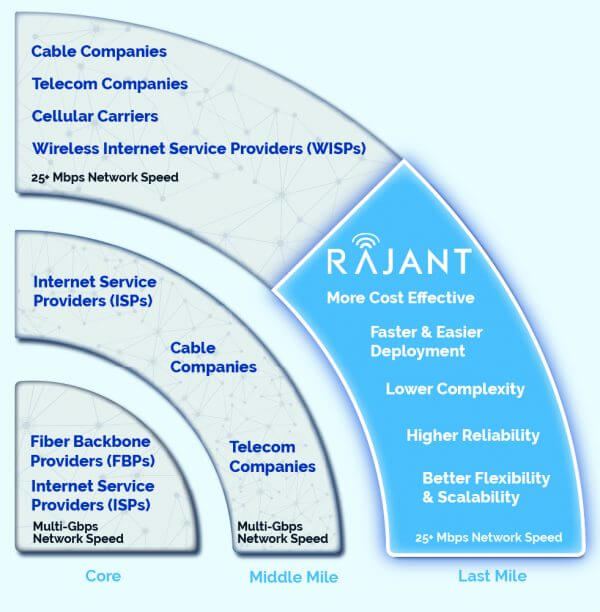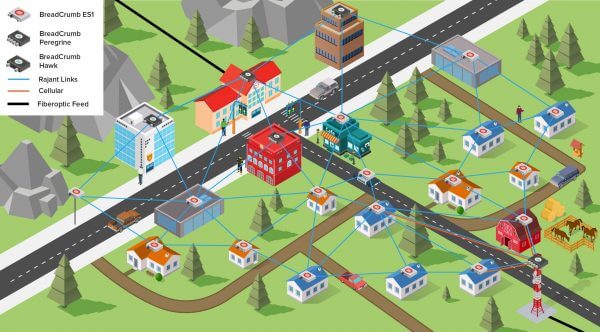As school is starting again all over America, one issue is on the minds of many US citizens and politicians – closing the “homework gap.” This is a newly coined term, which stems from the recent pandemic, and it’s catching on across America and worldwide.
The “homework gap” is the chasm between families with home broadband connectivity and those without it. Today, it is estimated that approximately 27 million families in the US alone do not have broadband access either due to no connectivity or the ability to afford it.
Over the past few years, it has become evident how vital broadband connectivity has become. It’s not just for big businesses anymore, but it’s also for mom-and-pop shops, local governments, schools, and households. Also, it’s not just essential for urban and suburban areas, since it’s also becoming increasingly vital in rural and remote regions. In rural areas, during the pandemic, it was not uncommon to see large numbers of cars parked outside of a McDonald’s or a Starbucks trying to connect with their broadband networks. There were entire families inside their vehicles, using multiple devices, trying to do the necessary day-to-day activities that now require broadband connectivity. One of the most heart-breaking things to witness was all the children of all ages struggling to maintain a connection, so that they could complete their daily homework.
Not too long ago, it was thought that the only way to get broadband to rural areas was via satellite, which is not a cost-effective solution, since most towns cannot afford it, let alone individual families. Today, many telecom companies, cable companies, and other traditional internet service providers are beginning to spread their networks to remote rural areas, bringing more wireless broadband options to these “digital deserts”.
However, the question becomes, how do you cover the “last mile”? It’s the term to describe the distance from the regional broadband termination point to all the individual homes and businesses throughout the town. But, since it’s often cost-prohibitive for telecom, cable, and internet service companies to address the “last mile” issue, many local governments and system integrators are turning to Rajant’s solutions to extend broadband service to cover the “last mile” wirelessly.

Rajant has designed a system to operate in extreme environments, so it is uniquely capable of overcoming the challenges related to rural deployments. The system consists of multi-frequency BreadCrumbs® that provide a resilient and reliable wireless network, and the technology can hold and maintain multiple connections simultaneously. Hence, it has an array of radio options allowing for real-time data routing. In turn, the network delivers fully mobile, rapidly scalable, high-capacity connectivity, which is precisely the type of broadband network that rural towns require.
This innovative breakthrough in rural broadband technology offers a solution that is not only more cost-effective but also faster and easier to deploy, offers lower complexity, has higher reliability, and provides better flexibility and scalability. The Rajant broadband solution for rural areas has already been deployed in several remote areas in the US. So, this model can be replicated by rural communities across America – and around the world – in an effort to reach the “digital deserts,” deliver broadband to the “last mile,” and close the “homework gap.”
Everyone wants and needs failover redundancy in the most far-reaching corners of any community. Whether it is lifesaving access to tele-remote medical assistance or remote learning, Rajant’s multi-frequency BreadCrumbs® provide a Layer-2 network that is proven resilient and reliable in some of the world’s most challenging environments.

Without infrastructure and high-tech support, a Rajant Kinetic Mesh® wireless network is up and running within minutes for customers in the military, mining, port, agriculture, and more. As a result, Rajant has designed a system to operate in extreme environments, so it is uniquely capable of overcoming the challenges related to rural deployments. Rajant technology can hold and maintain multiple connections simultaneously, given an array of radio options allowing for real-time data routing. Rajant BreadCrumb radio nodes work peer-to-peer to form robust and redundant links between assets. In turn, the network delivers fully mobile, rapidly scalable, high-capacity connectivity that is now required in rural towns.
All mesh networks are not created equal. Rajant BreadCrumbs create hundreds of potential paths to direct data-traffic. Each node has the intelligence of Rajant’s InstaMesh® networking software on board, which dynamically selects the fastest path or paths for delivery from these meshed connections. As a result, the effects of interference, even in harsh RF environments, can be mitigated.
The Rajant BreadCrumb nodes that comprise a Rajant Kinetic Mesh network can be deployed virtually anywhere and on almost anything to extend or enhance essential coverage for voice, video, data, and autonomous applications. As society and lifestyles evolve, Rajant too moves with full mobility to expand and enhance what is possible in an age of technological connectedness.

High-speed internet coverage brings renewed possibilities to communities attracting commerce, services, and amenities. “Smart City” enablement of IoT devices becomes possible with Rajant Kinect Mesh. Traffic lights, surveillance video, public Wi-Fi, and public safety equipment are easily affixed with low latency, high bandwidth BreadCrumbs.
Whether mobile or stationary, any ready node becomes part of the wireless network for broadband connections wherever they need to go. Rajant is compatible with other existing infrastructure, and the radio nodes have integrated Wi-Fi access point service for compatibility with millions of commercial off-the-shelf (COTS) client devices, like laptops, tablets, and smartphones.